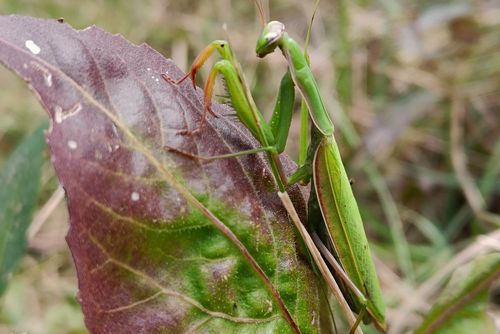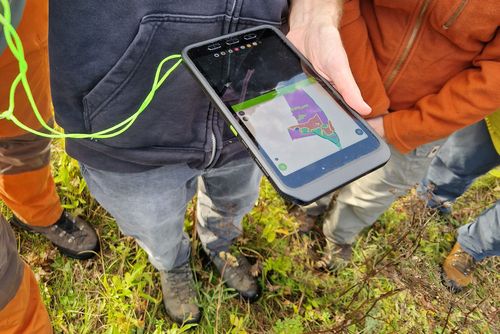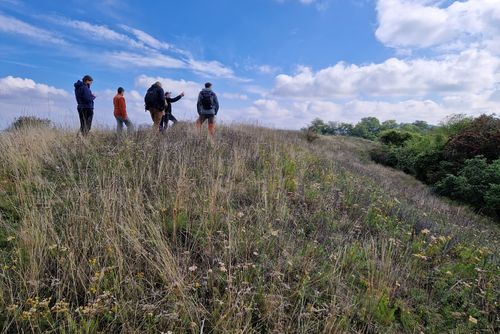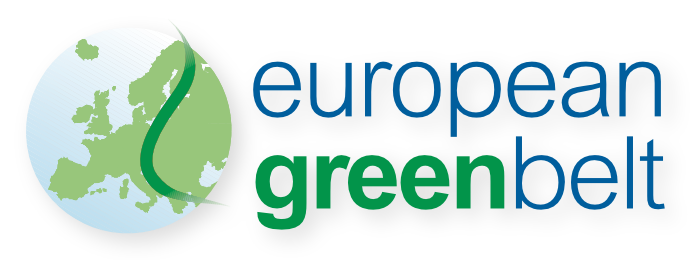BioReMo field excursion to the “Flower Hills” of the Weinviertel
The BioReMo project unites Austria and the Czech Republic in safeguarding biodiversity – from the iconic “Flower Hills” to the Thayatal/Podyjí National Park.



As part of the Interreg AT–CZ project BioReMo – Biodiversity Research & Monitoring, experts from the project consortium, including the Environment Agency Austria and the Austrian League for Nature Conservation of Lower Austria, visited the so-called “Flower Hills” Galgenberg, Dernberg and Bockstallberg – valuable dry grasslands in the heart of the Weinviertel region. These areas serve as biodiversity refuges in an intensively used agricultural landscape, home to rare and endangered species.
Due to their isolation, they function as stepping stones that enable genetic exchange and maintain stable populations across the landscape, extending to the cross-border Thayatal–Podyjí National Park. The National Parks represent an important section of the European Green Belt, the ecological backbone stretching along the former Iron Curtain. The European Green Belt links protected areas and habitats across Europe, symbolising both nature conservation and cross-border cooperation. However, the lack of extensive management and the spread of invasive species are putting these unique habitats at risk.
BioReMo aims to establish a joint biodiversity monitoring framework across Lower Austria, South Moravia and South Bohemia. Through a shared database and harmonised monitoring protocols, the project will strengthen the long-term protection of biodiversity in this historically and ecologically rich border region.
Project period: 2025–2028
Partners: National Park Thayatal (Lead), Národní park Podyjí, Environment Agency Austria, VÚK, Naturschutzbund NÖ, ZO ČSOP Kněžice
Funding: Funded by the European Regional Development Fund (ERDF) under Interreg AT-CZ
For more information, please contact:
Stefan Fuchs (stefan.fuchs(at)umweltbundesamt.at),
Environment Agency Austria
Project website: https://interreg.at-cz.eu/at/projektkatalog/2021-2027/klima-und-umwelt/atcz00178_bioremo
